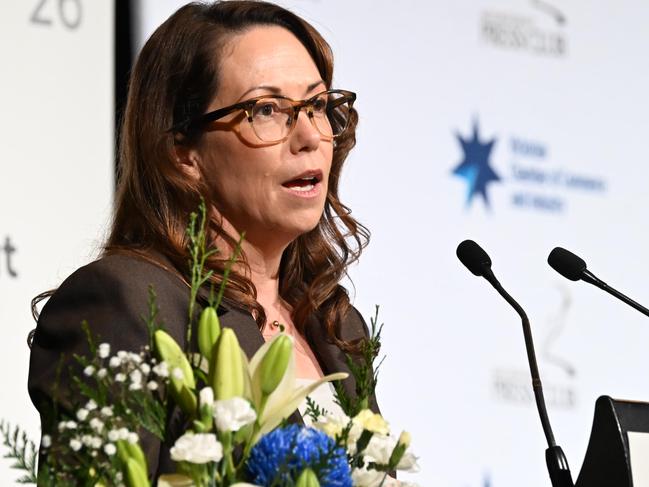What another downgrade to Victoria’s credit rating would mean for Victoria
Victoria’s Treasurer has flown to New York to meet with ratings agencies amid the threat of another cut to the state’s credit rating. But what is a credit rating and what impact would a downgrade have on everyday Victorians?

Victoria
Don't miss out on the headlines from Victoria. Followed categories will be added to My News.
Victoria has been repeatedly warned its credit rating is at risk of a further downgrade amid a ballooning debt pile on track to hit $194bn.
Treasurer Jaclyn Symes flew to New York on Wednesday to meet with the heads of major ratings agencies to defend the state’s AA rating — already the lowest in the nation.
But what is a credit rating and, more importantly, what does it mean for you and me if it is again downgraded.
What is a credit rating?
A credit rating assesses the creditworthiness of a borrower, such as the Victorian government or a company.
This credit grade is expressed as a letter.
The three main ratings agencies, Standard & Poor’s, Moody’s and Fitch, operate a scale running from AAA — the highest grade dubbed “prime” — all the way down to C for Standard & Poor’s and Moody’s, and D for Fitch.
The grade indicates a borrower’s ability to repay debt and helps investors evaluate the risk of lending money to a government — by buying bonds which show up as government debt — or a company.

What is Victoria’s current rating?
Victoria holds a AA rating from Standard & Poor’s.
It was downgraded by two notches from AAA in December 2020, falling to AA+ and then AA, in December 2020 due to ballooning debt.
Moody’s stripped Victoria of its AAA status in February 2021, before downgrading it from AA1 to AA2 in 2022.
The state holds a AA+ from Fitch.
None of these rating are prime but are “high grade” and represent a “stable outlook”.
That said, Victoria’s credit rating is lower than any other state in the nation.
Why does the rating matter?
Credit ratings affect the government’s borrowing costs — governments with a AAA rating can issue bonds with the lowest interest rate possible.
As a rating falls, the interest payments investors will demand in order to buy Victorian bonds rise as the bonds are viewed as being of higher risk.
Those interest payments are an expense to the Victorian government and paid by every taxpayer.
So a lower credit rating means a higher interest expense bill on the state’s debt for Victorian taxpayers.
What does it mean if it falls below a certain rating?
Another downgrade would be a massive hit to the Victorian government.
Victoria’s net debt is tracking to weigh in at $194b by 2028-29, during which the state will be spending close to 10c of every dollar in taxation revenue on servicing it.
The government can ill afford to be paying more on its debt, especially as it looks to raise funds to plough into its Big Build agenda and its signature pet project, the $34.5b Suburban Rail Loop.
A further downgrade would heap pressure on Victoria’s ability to finance major projects, a well as on the government to maintain services.

What have the credit rating agencies said?
The two main rating agencies have both warned the Allan-government over the handling of the state’s finances.
Standard & Poor’s has said: “Reining in growth in public spending, including the government’s wages bill, and achieving promised operating savings are key to strengthening the financial outcomes.
“However, these goals have proven to be difficult to achieve in recent years. Fiscal discipline is important, especially in the lead-up to the 2026 state election, because we have seen many Australian state governments lose control of their budget in the lead-up to an election.”
Moody’s has said: “Should the risks materialise, or reform momentum weakens, or both, the potential for higher-than-expected debt and interest burdens would further weigh on Victoria’s credit profile.”
What has the government said?
Treasurer Jaclyn Symes has defended the state’s finances, arguing the “major credit rating agencies continue to project a stable outlook for Victoria’s credit rating”.
“Those that want to talk down the state will choose to do so,” she has said.
“I will continue to talk up the Victorian economy.”
On Tuesday it emerged Victorian treasury officials have done no modelling on the impact of a credit downgrade on the state’s economy.
“The five step fiscal strategy is aimed at retaining the current credit rating and improving it over time,”
Department of Treasury and Finance secretary Chris Barrett told a Public Accounts and Estimates Committee hearing.
Originally published as What another downgrade to Victoria’s credit rating would mean for Victoria




